Ah, yes, mother figures and mythology. Both of these go hand-in-hand. We have seen it in all the major ones. Isis and Mut in Egyptian mythology, Parvati in Hindu, Rhea in Greek, and her Roman equivalent Ops.
After all, having such a goddess rooted at the spearhead of any pantheon is crucial. It indicates how impactful any mythology tales could be on those that worship them.
In Irish or Celtic or Irish mythology, the mother goddess is Danu.
Table of Contents
Who Is Danu?
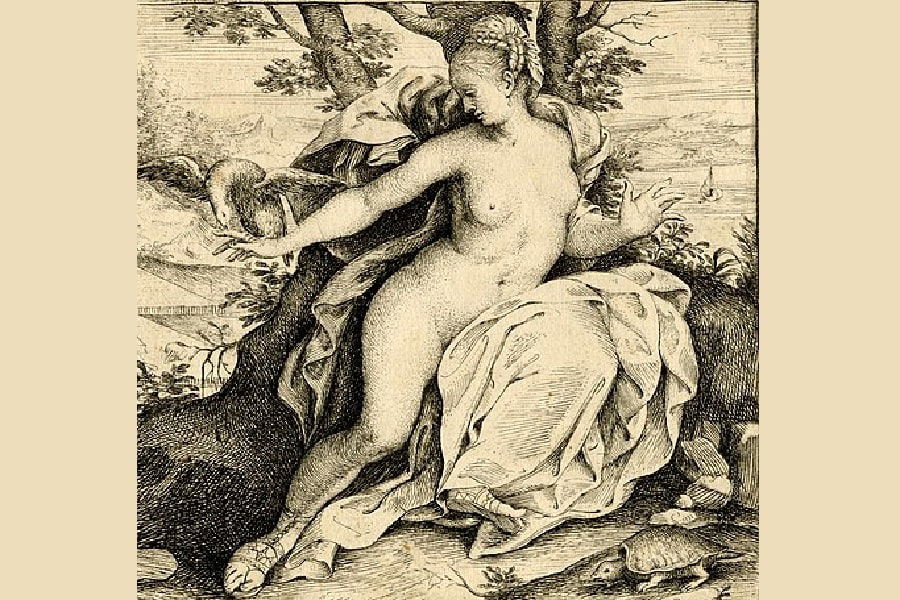
Danu is a mother goddess associated with fertility, abundance, and wisdom.
She is revered as the mother of the Tuatha Dé Danann, a race of supernatural beings in Irish mythology (more on them later). She could’ve been often depicted as an influential and nurturing figure.
As a result, she is the celestial mommy of hotshots like the Dagda (indeed the Zeus of his pantheon), the Morrigan, and Aengus. Her origins are somewhat unclear, but given her matriarchal position, it can be safe to assume that she ties back directly to the Celtic creation myth.
Origins of Danu
Unlike the mythology of the Greeks and Egyptians, the Irish weren’t very fond of writing their tales down.
READ MORE: 41 Greek Gods and Goddesses: Family Tree and Fun Facts
As a result, most of what we know about the Irish gods and goddesses comes from oral storytelling and medieval tales.
And you guessed it right; to really chart Danu’s birth and origins, we need to base it on legends and reconstructed myths.
One such speculative myth revolves around the romance between Danu and her loving husband Donn, both of whom were the very first beings in the Irish universe.

Speculative Celtic Creation Myth
Back in the day, the god Donn and goddess Danu fell hard for each other and had a bunch of kids.
One of their little ones, Briain, realized that he and his siblings were stuck between their love-locked parents and would surely kick the bucket if they didn’t separate. So, Briain convinced his mom to let him off his pops. In a fit of rage, Briain chopped Donn into nine pieces.
The mother goddess was mortified and started bawling, causing a flood that washed her children away to earth. Her tears mixed with Donn’s blood and became the seas, while his head became the sky and his bones turned to stone.
Two red acorns fell to earth, one turning into an oak tree that was the reincarnation of Donn and the other turning into a priest named Finn.
The oak grew berries that turned into the first humans, but they became lazy and started to rot from within. Finn advised that death was necessary for renewal, but Donn disagreed, and the two brothers fought an epic tree battle until Finn was killed. Donn’s heart burst from the pain, and his body renewed the world, creating the Otherworld where people go after death.
READ MORE: 10 Gods of Death and the Underworld From Around the World
Donn became the god of the Otherworld, while Danu remained the mother goddess who would go on to give birth to the Tuatha Dé Danann and suckle them.
Though reconstructed, this entire myth shares possible parallels to the story of Cronus overthrowing his father, Uranus.
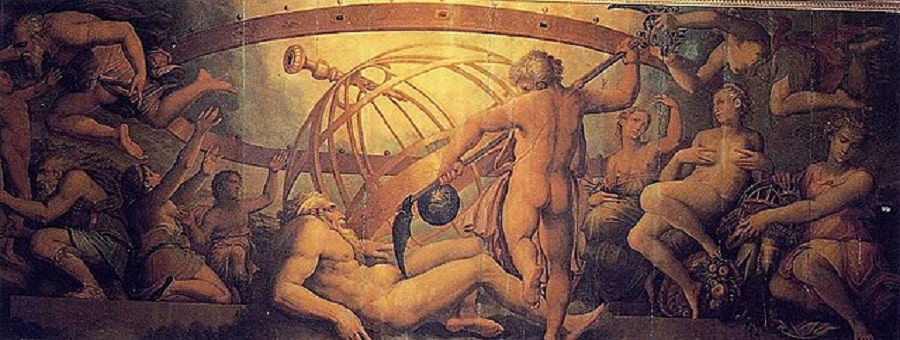
What Is Danu Known For?
Due to the fact that Danu was lauded as a mother goddess, we can guess quite a lot of things she was known for, even if we only know a little about this cryptic Irish goddess.
In some stories, she could’ve been associated with sovereignty and depicted as a goddess who appoints the kings and queens of the land. She could’ve also been seen as a goddess of wisdom and is said to have taught the Tuatha Dé Danann many skills, including the arts of poetry, magic, and metallurgy.
In modern Neo-paganism, Danu is often invoked in rituals for abundance, prosperity, and guidance in decision-making.
It’s worth noting that the information about the mother goddess is limited and shrouded in legends. Her role and characteristics vary across different sources. The Celts left few written records of their beliefs, and much of what is known about ancient Celtic gods and goddesses comes from later Irish and Welsh texts.
Is Danu the Triple Goddess? Danu and the Morrigan
It is safe to say every mythology loves the number 3. We’ve seen it simply everywhere, Slavic mythos being one of the more prominent ones.
READ MORE: 9 Important Slavic Gods and Goddesses
The number three is significant in mythology, symbolizing balance, harmony, and the trinity in many cultures and religions. It represents stages of life and death, realms of the world, and aspects of gods and goddesses.
It also symbolizes the sacredness of life, natural cycles, and balance between light and dark, heaven and earth, and order and chaos. It’s the number of completion, representing the union of past, present, and future.
As a result, it’s only fair that the Irish feature their own versions of it.
The Triple Goddess archetype in Celtic mythology represents the three stages of womanhood: maiden, mother, and crone. The goddess’s three aspects often represent the moon’s three phases (waxing, full, and waning), and the three stages of a woman’s life (youth, motherhood, and old age).
In Celtic mythology, several goddesses are associated with the Triple Goddess archetype. One example is the badass Irish goddess, the Morrigan, who is often depicted as a trinity of deities.
Oftentimes, this consists of the maiden Macha, the crone Babd, and the mother, Danu.
So you could most definitely connect Danu back to being a triple goddess when we bring the Morrigan into the equation.
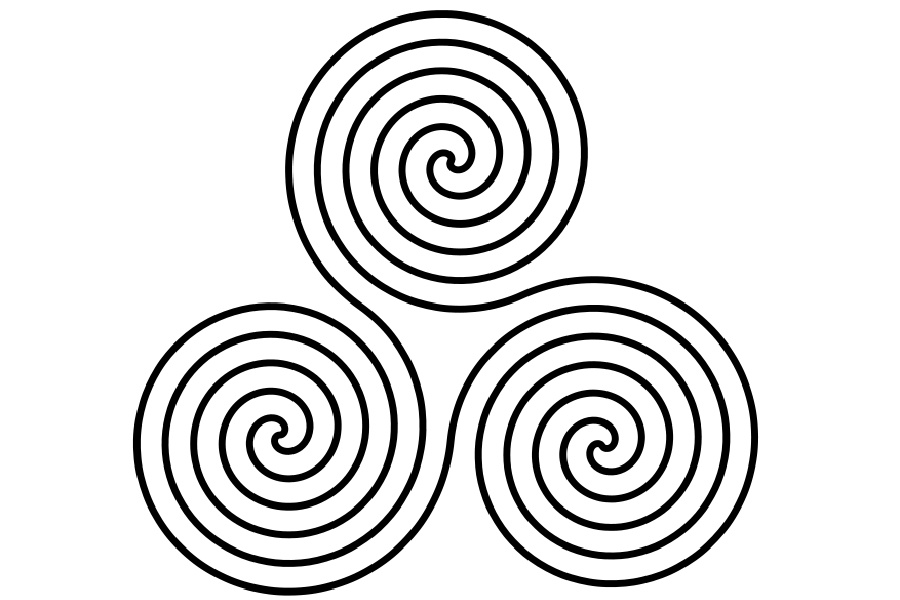
What Does the Name Danu Mean?
You won’t see this coming: Danu was actually a mom of many names.
As they didn’t leave behind written records, Danu might’ve actually been a collective name that could be broken down into the names of other goddesses.
She was also known as Anu, Danaan, or even Dana.
If we were to throw stones in the dark, we could somehow relate the ancient name of Danu to the river Danube, as she could’ve been a personification of it.
The Danube River is a major river in Europe, flowing through several countries, including Germany, Austria, Hungary, and Romania. The Celts lived in the regions around the Danube river, and their environment influenced their mythology and beliefs.
Some modern scholars suggest that the Celts may have worshiped Danu as a goddess of the Danube River and may have believed that the river was sacred and had supernatural powers.
But do note that the association of Danu with the Danube river is speculative. The Celts were a diverse group of tribes, and the association of Danu with the Danube river is only one interpretation.

Danu and The Tuatha de Danann
Thinking about how Danu’s role seems to be so limited? Well, this will make you think again.
Every pack needs an alpha, and in Celtic mythology, the she-wolf Danu herself led the group.
As the very first ancestral figure that gave birth to the entirety of the original Celtic pantheon of supernatural beings, Danu was attributed to being the first sovereign in her own right.
The “Tuatha de Danann” literally translates to “the Peoples of the Goddess Danu.” There is much debate about ancient tales and Danu’s inclusion in it. However, this one is for sure; the Tuatha de Danann diverged from Danu and no one else.
To really understand the importance of the Tuatha de Danann, compare them to the Olympian gods in Greek mythology and the Aesir gods in Norse tales. And Danu was at the helm of it all.
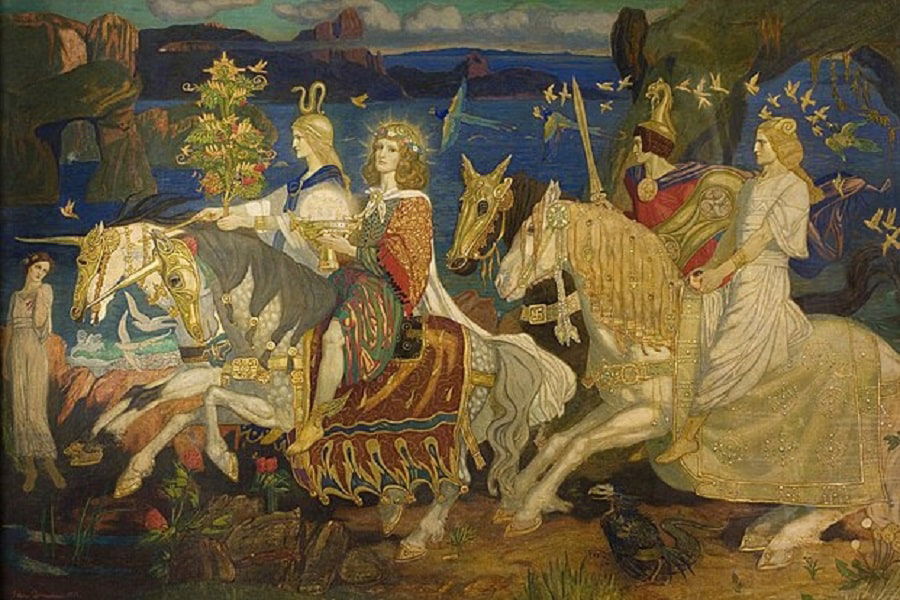
READ MORE: Norse Gods and Goddesses: the Deities of Old Norse Mythology
Danu in Myths
Unfortunately, there are no surviving myths that revolve around her specifically. No, not even oral ones.
Alas, her stories have been lost to time and what remains is a phantom mention of her in an ancient Irish text called “Lebor Gabála Érenn.” It is a compilation of poems that describe the creation of the Irish world and the subsequent invasions led by supernatural tribes, one of which included the children of Danu.
However, if we were to look back in time and piece together a makeshift tale involving Danu, we would go for one that puts her at the spearhead of the Tuatha de Danaan.
For instance, she might’ve given her children the powers of controlling magic and guided them toward victory against the Fomorians, a race of feral giants. Danu also might have played an enormous role in these wars as they are an essential part of Irish mythology.
Possible Symbols of Danu
Like every other deity in mythology, Danu might have had symbols that connected directly back to her.
As Danu could have been associated with rivers and bodies of water, symbols such as a river or a stream, a lake or a well, or a cup or a cauldron could have been used to represent her as a river goddess.
READ MORE: Water Gods and Sea Gods From Around the World
As a mother goddess, she was associated with fertility and abundance. As a result, symbols such as the horn of plenty, cornucopia, the apple, or a spiral might have been associated with her.
In modern neo-paganism, Danu is often represented by symbols such as the crescent moon, the spiral, or the triskele (a symbol of the Triple goddess) are often used sparingly to describe Danu and her association with the cycles of life, death, and rebirth.
READ MORE: 9 Gods of Life and Creation from Ancient Cultures
But do note that using symbols to represent Danu is a modern interpretation and reconstruction based on the limited information that is available.

Danu In Other Cultures
When it comes to mother goddess figures, Danu is not alone in her depiction. Other mythologies also have goddesses who embody similar characteristics.
For example, in Greek mythology, there is Gaia, the mother of all living things, who, like Danu, is associated with fertility and abundance and is often portrayed as a strong and nurturing figure.
In Egyptian mythology, we have Isis, a mother figure connected to fertility, rebirth, and protection; she is also often depicted as a goddess of wisdom.
READ MORE: 35 Ancient Egyptian Gods and Goddesses
Similarly, in Hindu mythology, there is Devi, the mother of the universe and the source of all creation, associated with fertility and the power of destruction and regeneration.
READ MORE: The 10 Most Important Hindu Gods and Goddesses
Finally, in Norse mythology, we have Frigg, goddess of love, fertility, and motherhood, who also is associated with wisdom and prophecy.
It’s worth noting that each goddess has unique characteristics and stories shaped by the culture and beliefs of the society that worshiped them. Yet, they all share some similarities with Danu in some form.
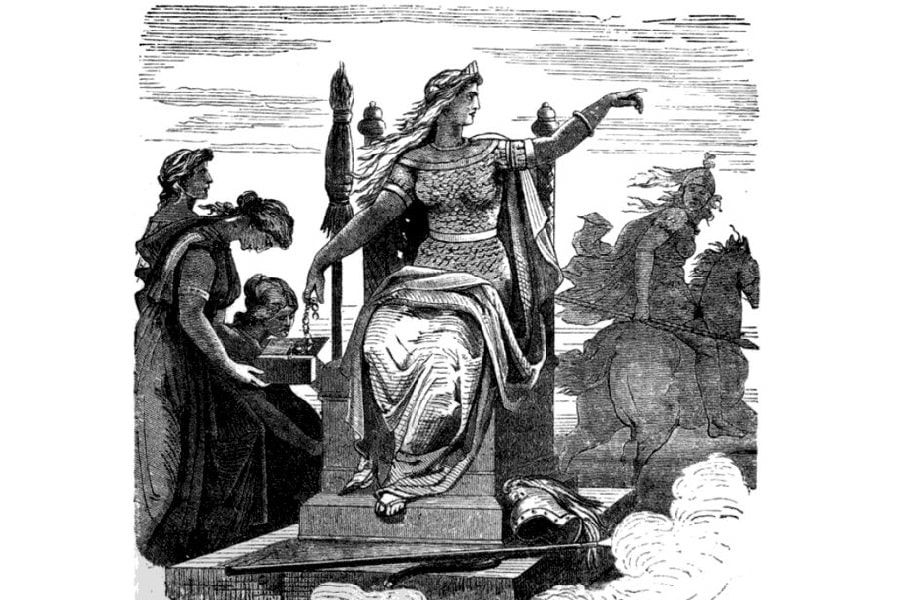
Legacy of Danu
Given how Danu is a deity who has managed to lurk underneath the shadows of time throughout almost all of history, we won’t, unfortunately, see much of her in the future in terms of pop culture.
Unless, of course, it is changed by a surprise appearance from her in a movie directed by an innovative Irish director.
Regardless, Danu still appeared in the 2008 TV series, “Sanctuary,” as a significant part of the Morrigan. She was portrayed by Miranda Frigon.
Danu’s name is also mentioned as part of the “Children of Danu” in the popular video game “Assassin’s Creed Valhalla”.
Conclusion
Shrouded in mystery and going by countless names, Danu’s presence still endures the threat of mythological extinction.
Though we know very little about Danu as we know about the other Irish gods, we have enough to make educated guesses about her exact role.
Regardless of her obscurity, we must recognize that Danu is a name that ties back to the ancient history of Ireland.
Danu was the essence of what made Irish mythology relevant in the first place.
Though not popular worldwide, her name still echoes underneath the concrete caverns of time underneath Dublin, Limerick, and Belfast to this day.
References
Dexter, Miriam Robbins. “Reflections on the Goddess* Donu.” The Mankind Quarterly 31.1-2 (1990): 45-58.Dexter, Miriam Robbins. “Reflections on the Goddess* Donu.” The Mankind Quarterly 31.1-2 (1990): 45-58.
Sundmark, Björn. “Irish Mythology.” (2006): 299-300.
Pathak, Hari Priya. “Imaginative Order, Myths, Discourses, and Gendered Spaces.” ISSUE 1 MYTH: INTERSECTIONS AND INTERDISCIPLINARY PERSPECTIVES (2021): 11.
Townshend, George. “Irish Mythology.” The Sewanee Review, vol. 23, no. 4, 1915, pp. 458–67. JSTOR, http://www.jstor.org/stable/27532846. Accessed 16 Jan. 2023.